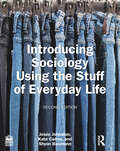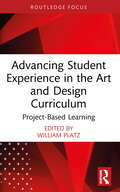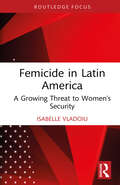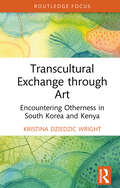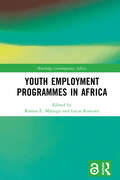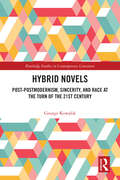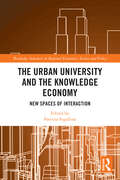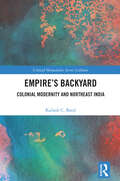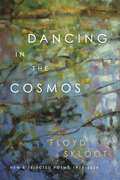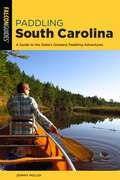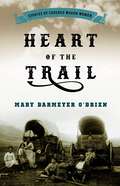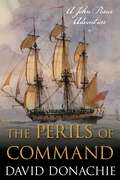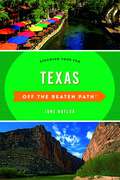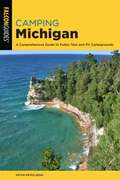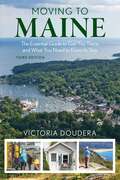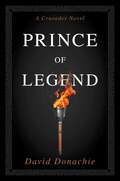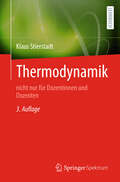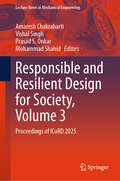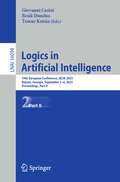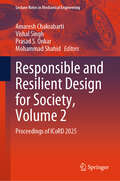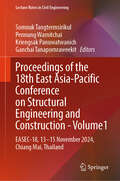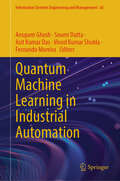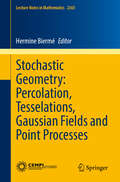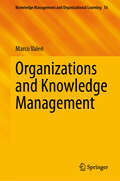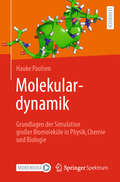- Table View
- List View
Introducing Sociology Using the Stuff of Everyday Life
by Josee Johnston Kate Cairns Shyon BaumannThe challenges of teaching a successful introductory sociology course today demand materials very different from the norm. It is a question of making the practice of sociological thinking meaningful, rigorous, and relevant to today’s world of undergraduates.This comparatively concise, highly visual, and engaging book offers a refreshingly new way forward to reach students, using one of the most powerful tools in a sociologist’s teaching arsenal – the familiar stuff in students’ everyday lives throughout the world: the jeans they wear to class, the coffee they drink each morning, or the phones their professors tell them to put away during lectures.A focus on consumer culture, seeing the strange in the familiar, is not only interesting for students; it is also (the authors suggest) pedagogically superior to more traditional approaches. By engaging students through their stuff, this book moves beyond teaching about sociology to helping instructors teach the practice of sociological thinking. It moves beyond describing what sociology is so that students can practice what sociological thinking can do. This pedagogy also posits a relationship between teacher and learner that is bi-directional. Many students feel a sense of authority in various areas of consumer culture, and they often enjoy sharing their knowledge with fellow students and with their instructor. Opening up the sociology classroom to discussion of these topics validates students’ expertise on their own life-worlds. Teachers, in turn, gain insight from the goods, services, and cultural expectations that shape students’ lives.While innovative, the book has been carefully crafted to make it as useful and flexible as possible for instructors aiming to build core sociological foundations in a single semester. A map on pages xix–xx identifies core sociological concepts covered so that a traditional syllabus as well as individual lectures can easily be maintained. Theory, method, and active learning exercises in every chapter constantly encourage the sociological imagination as well as the “doing” of sociology.This new edition is thoroughly revised and updated, incorporating the latest research around material sociology, culture, and object-oriented studies. New teaching materials and illustrations are included. Online resources to support teaching and learning include: Videos, flashcards, quizzes, and further reading Instructor’s manual, PowerPoints, and test bank
Advancing Student Experience in the Art and Design Curriculum: Project-Based Learning (Routledge Focus on Design Pedagogy)
by William PlatzAdvancing Student Experience in the Art and Design Curriculum: Project-Based Learning will renew the critical attention paid to projects in the art and design curriculum and rigorously consider impacts on student experience.How exactly do we conceive of ‘projects’ in the context of a post-secondary creative arts curriculum? Each chapter in this book confronts the project as a specific, potent and transformative site of learning with vast engagement potential for the contemporary student. What unites the project-based learning methods in this book is an emphasis on the motivated and purposeful activities of the learners that result in tangible making and doing. Craft-based learning, practice-based learning, experimental learning design, culturally informed practices and reconsideration of obsolete learning mechanisms all coalesce in this text and evidence the innovativeness and abiding power of project-based learning.Each author in this book describes a diverse experience of learning that serves as an exemplar of project-based learning and illuminates the histories, theories and dynamics of the method for teachers, learning designers, educational theorists and interdisciplinarians.
Femicide in Latin America: A Growing Threat to Women’s Security (Focus on Global Gender and Sexuality)
by Isabelle VladoiuFemicide in Latin America: A Growing Threat to Women's Security explores the persistent and rising rates of femicide across sixteen Central and South American countries as a critical issue of national stability and regional security.The book examines how cultural norms like machismo, organized crime, state-level patriarchy, and human trafficking create environments where women face increasing risk, supported by comprehensive data, case studies, and lived experiences. It features a Colombian case study documenting the first legal recognition of femicide as a weapon of war, demonstrating how conflict amplifies gender-based violence. By connecting femicide to broader security discussions, the work offers practical policy recommendations to address this escalating crisis.Femicide in Latin America: A Growing Threat to Women's Security is essential reading for students, researchers, and policymakers in human rights, security studies, Latin American politics, feminist studies, gender studies, and international law.
Transcultural Exchange through Art: Encountering Otherness in South Korea and Kenya
by Kristina Dziedzic WrightTranscultural Exchange through Art provides an exploration of two countries and their capital cities, two regions and their growing cultural engagement with one another, soft and hard power and their impact on the arts, multiculturalism, museums, globalization, cosmopolitanism and postcoloniality.Drawing on the author’s experiences of working in Kenya and living in South Korea, as well as interviews with artists, curators and other practitioners, the book demonstrates that experiencing “otherness” through the imaginative engagement of art can cultivate appreciation of cultural diversity. Various case studies from Nairobi and Seoul are analyzed to unpack narratives about nation, self and other through the cultural and creative industries. By focusing on two non-Western regional capitals whose urban contemporary development is affected by their colonial pasts, the book explores the larger dynamics of postcolonial nation building and the formulation of cultural identities in the face of rapid economic development and demographic changes. The issues identified in the study are linked to wider debates concerning the role of the arts and art museums in relation to migration, globalization and multiculturalism.Transcultural Exchange through Art will be of great interest to academics and practitioners working in the cultural and creative industries, museum and curatorial studies, visual culture studies, African studies and Asian studies. The book transcends disciplinary boundaries and relates academic research to pragmatic issues such as diversity and inclusion in public cultural spaces.
Youth Employment Programmes in Africa (Routledge Contemporary Africa)
by Ramos E. Mabugu Lucas RonconiThis book investigates youth employment programmes across nine African countries, providing important insights into the world’s youngest continent by population, in which 60% of people are aged under 25.By 2050, the labour force in sub-Saharan Africa is expected to be almost double the size of the labour force in high-income countries, representing a massive shift in the world’s working population and providing a significant challenge for job creation. In this book, contributors bring together insights from more than 500 in-depth interviews and 1,500 focus group participants to consider whether youth employment programmes are effectively reaching vulnerable groups. This book tackles the problem of political clientelism in the allocation of benefits and considers the level of coordination that is taking place across programmes and political institutions.Combining rich empirical findings with data about labour market outcomes and institutions, this book will be an important read for researchers wishing to understand the political economy of youth employment policy in Africa.
Hybrid Novels: Post-postmodernism, Sincerity, and Race at the Turn of the 21st Century (Routledge Studies in Contemporary Literature)
by George KowalikThe phrase “post-postmodernism” has appeared in Contemporary Literary Studies since the 20th century, but what does it mean? Scholars have defined the term in various, often contradictory ways. Existing studies also rarely centralise race – an essential component in the transition from postmodern irony to post-postmodern sincerity. Hybrid Novels analyses post-postmodernism’s only consistency and certainty: hybridity. This speaks for a broader social issue concerning the ethics of categorisation and the conflicting labels imposed on subjectivity. Hybrid Novels considers landmark American/British novels by Percival Everett, Jonathan Franzen, Zadie Smith, and David Foster Wallace, published from 1996 to 2001. It positions these authors at the centre of the post-postmodernism debate together for the first time. This book suggests that 2010s autofiction further develops post-postmodern tensions of irony and sincerity at the turn of the 21st century. Major American/Canadian novels by Sheila Heti, Ben Lerner, Teju Cole, and Tao Lin are discussed, published from 2010 to 2013.
The Urban University and the Knowledge Economy: New Spaces of Interaction (Routledge Advances in Regional Economics, Science and Policy)
by Patrizia IngallinaThis book presents international experiences of territorial strategies and urban projects in which universities have played a major role over the past fifteen years, through spatial planning and within a multiscalar approach.This approach constitutes the book’s first originality, illustrating the complexity of certain cases (such as New York, London, or the Greater Paris Metropolis) by highlighting the significant interconnections between spatial and institutional scales. The second innovative aspect lies in the selection of case studies, some of which are addressed for the first time in international literature (Benguerir in Morocco, Bergamo in Italy, Grenoble, Lille, Marseille, and Lyon in France, and Hanoi in Vietnam), while others are still little known from the perspective of university planning and its (political and economic) role in major metropolitan areas (Greater Paris Metropolis, Seoul). The third key point explores the opportunity to directly compare well-established Western metropolises like New York and London with the evolving Greater Paris Metropolis. It also highlights Montreal, a city blending Anglo-Saxon and French influences, while seeking its own unique path. Additionally, Asia’s dynamic role is explored, from China’s innovative university planning to Hanoi’s ambitious projects and Seoul’s tension between national policies and metropolitan ambitions.All chapters have been designed to raise questions, provoke reflections, and develop a perspective on the ongoing evolution of territorial strategies that leverage universities and the research conducted within them as a means to drive economic growth and increase productivity. These strategies also converge toward an image of the city as a knowledge hub, facilitating relationships between universities, businesses, and city users.
Empire’s Backyard: Colonial Modernity and Northeast India (Critical Humanities Across Cultures)
by Kailash BaralThis book transcends traditional historical analysis to explore the intricate tapestry of colonialism, modernity, and identity formation in Northeast India. Moving beyond a simplistic view of the region as the British Empire’s ‘backyard,’ it examines the transformative processes that turned Northeast India beyond Sylhet, the empire’s eastern outpost, into a vibrant frontier. While recognizing the importance of exploration and territorial expansion in establishing colonial dominance, the narrative emphasizes the crucial roles of resistance and local agency in shaping the region’s history.The volume critically analyzes the influence of the Church as a powerful force within the ‘civilizing mission,’ alongside military interventions. It dissects the complex relationship between colonialism and modernity, revealing how the rhetoric of progress often concealed motives of resource extraction and cultural disruption. Through a meticulous unraveling of structures, systems, and processes, the work weaves a compelling narrative of Northeast India, not as a passive recipient of colonial ideas, its imposition of alien rules and values but as a region actively shaped by the interplay of power, resistance, and adaptation.This book will be of interest to scholars, researchers, and students of history, sociology, colonial and postcolonial studies, cultural studies, and South Asian studies, especially those concerned with Northeast India.
Dancing in the Cosmos: New and Selected Poems, 1973–2024
by Floyd SklootDancing in the Cosmos contains work selected by Floyd Skloot from his nine previous poetry collections as well as a group of new poems written in the last decade, including an exploration of his life since the onset of Parkinson’s disease.At the heart of the book is a consideration of illness and love, science and grit, and clarity of purpose when chaos rules. Much of Skloot’s writing reflects the experience of becoming disabled in 1988 from viral-born brain damage, as he shows how full engagement in life and the world is not only possible but essential when life takes unexpected turns and when illness seems to derail all progress. His poems make use of poetry’s traditional forms and structures, along with its contemporary freedoms, its range of linguistic and rhythmic possibilities, and its capacity for fighting its way again and again toward the necessary strength that enables endurance, and even celebration.
Paddling South Carolina: A Guide to the State's Greatest Paddling Adventures (Paddling Series)
by Johnny MolloyThe hardest part of paddling South Carolina is choosing your route! From the mountain-rimmed waters of Lake Jocassee to the rapids of the Saluda River to rice-field canals along Wadboo Creek, the Palmetto State offers a variety of great paddles all year-round. Paddling South Carolina features 40 paddling adventures throughout the state. With a focus on recreational paddling, all trips avoid complicated put-ins, portages, and dangerous expert sections but offers concise paddle summaries, excellent route descriptions, GPS coordinates, and sidebars on geology and wildlife. Lakes and ponds, rivers and creeks are featured.
Heart of the Trail: Stories of Covered Wagon Women
by Mary Barmeyer O'BrienUpdated and expanded for its twentieth anniversary—the beloved book that tells the stories of the women who traveled West. In Heart of the Trail Mary Barmeyer O'Brien beautifully captures the triumphs and tribulations of women who crossed the American frontier by wagon during the great Western migration of the mid nineteenth century. While their stories are widely different, each of these remarkable women was inspiring, courageous, and resourceful. From the successes of mountaineer Julia Anna Archibald to the grueling trials of Mary Powers, these stories reflect the adventure and hardship experienced by the thousands of women who took to the trails. The legacy of their letters and diaries, most written on the trail, is a fascinating addition to understanding the history of the West.Mary Barmeyer O'Brien&’s books on the pioneer experience include The Promise of the West; Jeannette Rankin: Bright Star in the Big Sky; Outlasting the Trail: The Story of a Woman's Journey West; May: The Hard-Rock Life of Pioneer May Arkwright Hutton; and Across Death Valley. She lives in Polson, Montana.
Perils of Command: A John Pearce Adventure (John Pearce)
by David DonachieJohn Pearce, having negotiated the highly questionable sale of the two French prizes taken in The Devil to Pay, has left HMS Flirt, as well as the crew and the wounded Henry Digby, in Brindisi and is now headed for Naples to see his lover. In an uncomfortable journey he seeks to work out a way to best both Admiral Sir William Hotham and Captain Ralph Barclay, men who are his sworn enemies. All his calculations are thrown into turmoil when he discovers that Emily is pregnant which, while it is a cause for joy, is also a reason to worry; she is still married to Ralph Barclay and by the laws of the time he can claim the child as his own.
Texas Off the Beaten Path®: Discover Your Fun (Off the Beaten Path Series)
by June NaylorTired of the same old tourist traps? Whether you&’re a visitor or a local looking for something different, Texas Off the Beaten Path shows you the Lone Start State with new perspectives on timeless destinations and introduces you to those you never knew existed—from the best in local dining to quirky cultural tidbits, hidden attractions, unique finds and unusual locales. So if you&’ve &“been there, done that&” one too many times, get off the main road and venture Off the Beaten Path.
Camping Michigan: A Comprehensive Guide To Public Tent And RV Campgrounds (State Camping Series)
by Kevin RevolinskiNo other campground guidebook focuses solely on the Michigan quite like Kevin Revolinski's. Michigan offers a surprising array of quiet, out-of-the-way parks replete with lakes, rivers, rugged hills, and even rocky cliffs. Fully revised and updated, Camping Michigan opens the door to these places. It includes:Ø Up-to-date trail information and route descriptionsØ Accurate directions to popular as well as less-traveled trailsØ Difficulty ratings for each hikeØ Historical highlightsØ Detailed trail mapsØ Zero-impact camping, and wilderness safety tips and techniques
Moving to Maine: The Essential Guide to Get You There and What You Need to Know to Stay
by Victoria DouderaThis is a completely revised and expanded edition of the best-selling, comprehensive guide covering not only reasons to move to Maine but also what newcomers will find once they get here. The book answers questions about what Maine is really like as a place to live, providing a broad range of information about schools, housing, cultural life, taxes, work and employment opportunities, and even the weather.
Prince of Legend: A Crusades Novel (Crusades)
by David DonachieThe final volume in the powerful Crusades trilogyThe crusading armies go from besieging the citadel of Antioch to themselves being besieged. Although Bohemund, leader of the Apulian Normans, manages to take a firm grip on the city, the army of crusaders is depleted, thinned by death, disease, and defection.And for Bohemund and his nephew Tancred there is yet another difficulty: the dissent between the Crusade leaders has broken out into the open, with the wealthy Raymond of Toulouse stirring up conflict. If the Christian host is fighting on two fronts, so is Bohemund himself. With the enemy Turks at his front and his warring peers at his back, can he gain the mighty city of Antioch once and for all? Only one of the greatest battles of the age will decide.
Thermodynamik: nicht nur für Dozentinnen und Dozenten
by Klaus StierstadtDieses Lehrbuch führt in die Thermodynamik ein, basierend auf mikroskopischen Grundlagen – den Eigenschaften und dem Zusammenwirken der Atome. Besonderheiten Es vermittelt eine klar verständlich formuliert Einführung in die Thermodynamik auf mikroskopischer Grundlage. Die thermodynamischen Größen Temperatur, Wärme und Entropie werden auf die Eigenschaften der Atome zurückgeführt und so erklärt. Der Hauptteil entspricht einer vierstündigen Vorlesung, während der umfangreiche Anhang Stoff für Ergänzungsstunden, Seminare oder Übungen bietet. Der Inhalt: Einführung.- Was ist Temperatur?- Was ist Wärme?- Die Entropie.- Die Hauptsätze der Thermodynamik.- Offene Systeme.-Thermodynamische Potentiale.- Erscheinungsformen der Materie, Phasen und Phasenübergänge.- Suszeptibilität und Response – Die Eigenschaften der Stoffe.- Vom Gas zur Flüssigkeit. – Kristalline Festkörper.- Reale Magnete.- Strömung und Transport.- Schwankungen. Neuerungen: Die dritte Auflage des Buches ist speziell auf eine vierstündige Bachelorvorlesung ausgerichtet. Die Zielgruppe: Das Buch richtet sich an Studierende im Bachelorstudium Physik, Ingenieurwissenschaften, Biologie, Chemie, Medizin usw. sowie deren Lehrende. Vorkenntnisse: Erste Kenntnisse in Mechanik, Elektrodynamik, Quantenmechanik und Atomphysik sollten vorhanden sein.
Responsible and Resilient Design for Society, Volume 3: Proceedings of ICoRD 2025 (Lecture Notes in Mechanical Engineering)
by Amaresh Chakrabarti Mohammad Shahid Vishal Singh Prasad S. OnkarThis book showcases cutting-edge research papers from the 10th International Conference on Research into Design (ICoRD 2025) – the largest in India in this area – written by eminent researchers from across the world on design processes, technologies, methods and tools, and their impact on innovation. This tenth edition of this biennial conference delves into the multifaceted nature of design, showcasing cutting-edge research and fostering collaboration. It aims to showcase cutting-edge research about design to the stakeholders; aid the ongoing process of developing and extending the collective vision through emerging research challenges and questions; and provide a platform for interaction, collaboration and development of the community in order for it to take up the challenges to realize the vision. The contemporary world is in the midst of significant shifts, encompassing everything from climate change to the rapid advancements in Artificial Intelligence. These transformations impact the fabric of everyday human lives and society as a whole. In this context, design emerges as a crucial player, offering a pivotal role in navigating these changes to foster a balanced and just world. This conference edition, therefore has the theme of 'Responsible and Resilient Design for Society', underscoring the importance of adopting approaches that contribute to building a resilient society while acknowledging the responsibilities that come with being designers and researchers. The book will be of interest to researchers, professionals and entrepreneurs working in the areas on industrial design, manufacturing, consumer goods, and industrial management who are interested in the new and emerging methods and tools for design of new products, systems and services.
Logics in Artificial Intelligence: 19th European Conference, JELIA 2025, Kutaisi, Georgia, September 1–4, 2025, Proceedings, Part II (Lecture Notes in Computer Science #16094)
by Temur Kutsia Besik Dundua Giovanni CasiniThis two-volume set LNAI 16093-16094 constitutes the proceedings of the 19th European Conference on Logics in Artificial Intelligence, JELIA 2025, held in Kutaisi, Georgia, during September 1–4, 2025. The 39 full papers and 5 short papers included in this volume were carefully reviewed and selected from 108 submissions. They were organized in the following topics: Part I: Special Track: Logics for Explainable and Trustworthy AI; Argumentation; Constraint Satisfaction and Optimization; Deontic Reasoning; Description Logics and Ontological Reasoning; Higher-order and Non-classical Logics; Logic Programming and Answer Set Programming. Part II: Non-monotonic Reasoning and Belief Change; Propositional Reasoning, QBF, and Satisfiability Problems; Temporal Reasoning; Theorem Proving.
Responsible and Resilient Design for Society, Volume 2: Proceedings of ICoRD 2025 (Lecture Notes in Mechanical Engineering)
by Amaresh Chakrabarti Mohammad Shahid Vishal Singh Prasad S. OnkarThis book showcases cutting-edge research papers from the 10th International Conference on Research into Design (ICoRD 2025) – the largest in India in this area – written by eminent researchers from across the world on design processes, technologies, methods and tools, and their impact on innovation. This tenth edition of this biennial conference delves into the multifaceted nature of design, showcasing cutting-edge research and fostering collaboration. It aims to showcase cutting-edge research about design to the stakeholders; aid the ongoing process of developing and extending the collective vision through emerging research challenges and questions; and provide a platform for interaction, collaboration and development of the community in order for it to take up the challenges to realize the vision. The contemporary world is in the midst of significant shifts, encompassing everything from climate change to the rapid advancements in Artificial Intelligence. These transformations impact the fabric of everyday human lives and society as a whole. In this context, design emerges as a crucial player, offering a pivotal role in navigating these changes to foster a balanced and just world. This conference edition, therefore has the theme of 'Responsible and Resilient Design for Society', underscoring the importance of adopting approaches that contribute to building a resilient society while acknowledging the responsibilities that come with being designers and researchers. The book will be of interest to researchers, professionals and entrepreneurs working in the areas on industrial design, manufacturing, consumer goods, and industrial management who are interested in the new and emerging methods and tools for design of new products, systems and services.
Proceedings of the 18th East Asia-Pacific Conference on Structural Engineering and Construction- Volume1: EASEC-18, 13–15 November 2024, Chiang Mai, Thailand (Lecture Notes in Civil Engineering #677)
by Kriengsak Panuwatwanich Somnuk Tangtermsirikul Pennung Warnitchai Ganchai TanapornraweekitThis book presents the proceedings of the 18th East Asia-Pacific Conference on Structural Engineering and Construction (EASEC-18), held in Chiang Mai, Thailand on November 13–15, 2024. Under the theme &“Construction Engineering for a Responsible Growth and Sustainable Future,&” the conference brought together novel research and advancements in materials science and engineering in construction, foundation and geotechnical engineering, resilient structures and design for natural disasters and extreme events, structural analysis and design, smart infrastructure systems and construction management, advanced construction techniques, operations, and maintenance, transportation engineering, circular and green construction economy, and professional practices and engineering education. Contributing to the overarching conference theme, specialized symposia were also organized to address salient issues on structural stability and structural vibration control of engineering structures against multiple dynamic hazards, seismic resilient structures, structural health monitoring, Bayesian system identification of civil engineering structures, and advanced concrete technology and composite structures.
Quantum Machine Learning in Industrial Automation (Information Systems Engineering and Management #65)
by Asit Kumar Das Soumi Dutta Fernando Moreira Anupam Ghosh Vinod Kumar ShuklaThis book focuses on quantum machine learning that harnesses the collective properties of quantum states, such as superposition, interference, and entanglement, uses algorithms run on quantum devices, such as quantum computers, to supplement, expedite, or support the work performed by a classical machine learning program. The devices that perform quantum computations are known as quantum computers. Quantum computers have the potential to revolutionize computation by making certain types of classically intractable problems solvable. A few large companies and small start-ups now have functioning non-error-corrected quantum computers composed of several tens of qubits, and some of these are even accessible to the public through the cloud. Additionally, quantum simulators are making strides in fields varying from molecular energetics to many-body physics. Most known use cases fit into four archetypes: quantum simulation, quantum linear algebra for AI and machine learning, quantum optimization and search, and quantum factorization. Advantages of quantum computing are many and to list a few, first, they&’re fast. Ultimately, quantum computers have the potential to provide computational power on a scale that traditional computers cannot ever match. In 2019, for example, Google claimed to carry out a calculation in about 200 seconds that would take a classical supercomputer around 10,000 years. Second, they can solve complex problems. The more complex a problem, the harder it is for even a supercomputer to solve. When a classical computer fails, it&’s usually because of a huge degree of complexity and many interacting variables. However, due to the concepts of superposition and entanglement, quantum computers can account for all these variables and complexities to reach a solution. Last but not the least, they can run complex simulations. The speed and complexity that quantum computing can achieve means that, in theory, a quantum computer could simulate many intricate systems.
Stochastic Geometry: Percolation, Tesselations, Gaussian Fields and Point Processes (Lecture Notes in Mathematics #2365)
by Hermine BierméThis volume covers a broad spectrum of topics in stochastic geometry, including percolation, tessellations, Gaussian fields and point processes. Based on lectures given at the Stochastic Geometry Days held by the Stochastic Geometry Research Group from 2019 to 2022, the book opens with an introduction to Russo–Seymour–Welsh theory for the study of percolation, before going on to explore random tessellations and their applications, the geometry of Gaussian random fields, and the zeros of analytic Gaussian fields. This discussion naturally leads to the concept of determinantal point processes, whose applications in signal processing are the focus of the final chapter. Providing a unique and accessible overview of active fields in stochastic geometry, their tools and models, this collection of lectures will encourage further research and applications.
Organizations and Knowledge Management (Knowledge Management and Organizational Learning #16)
by Marco ValeriThe premise of this book is that in the contemporary fast-evolving competitive landscape, traditional management models are outdated. The author emphasizes instead the importance of continuous knowledge regeneration and human capital in achieving sustainable success. Through insightful chapters on post-modernism in organizational design, complexity, and strategic learning, this book guides organizations in recognizing the value of human knowledge and the dynamic nature of routines. It challenges outdated management models, urging leaders to reinvent their organizations with intelligence and adaptability. Essential reading for business leaders, managers, and academics, this book offers a comprehensive framework for fostering innovative, knowledge-driven organizations.
Molekulardynamik: Grundlagen der Simulation großer Biomoleküle in Physik, Chemie und Biologie
by Hauke PaulsenDieses Lehrbuch führt ein in die computergestützte Methode die Wechselwirkungen zwischen Atomen und Molekülen durch empirische Potentiale zu beschreiben und deren Dynamik zu berechnen. Besonderheiten:Mittels Einführung und Anwendungsbeispiel werden die Lesenden schrittweise mit grundlegenden Aspekten von klassischen Molekulardynamik-Simulationen großer Biomoleküle vertraut gemacht. Das Ergebnis einer solchen Simulation, die sogenannte Trajektorie, lässt sich in einer anschaulichen Analogie mit einem „Film&“ vergleichen: Dazu gehören im dritten Kapitel als „Akteure&“ die Atome und Moleküle, im vierten als „Filmset&“ die Simulationsboxen, im fünften als „Rollenbeschreibungen&“ die klassischen Wechselwirkungsmodelle für die Atome und im sechsten als „Drehbuch&“ die Algorithmen, die die Bewegungsgleichungen numerisch integrieren. Anschließend erfolgt der Einbezug von Begriffen aus der statistischen Mechanik und ein ausführlicher Anhang liefert für das Verständnis nützliche mathematische und physikalische Grundlagen. Diese kompakte Einführung in klassische Molekulardynamik-Simulationen schließt die Lücke zur Spezialliteratur. Elektronisches Zusatzmaterial wie Videodarstellungen von Simulationen, Strukturdateien von Molekülen und Skripte zur Durchführung von Simulationsrechnungen sollen den Lesenden eine aktive Auseinandersetzung mit dem Lehrstoff erleichtern. Der Inhalt:1. Einleitung – 2. Ein praktisches Beispiele – 3. Atome und Moleküle – 4. Simulationsboxen – 5. Wechselwirkungen – 6. Integration der Bewegung – 7. Ensembles – 8. Thermostate – 9. Barostate Zielgruppe:Dieses Buch bietet Studierenden der Physik, Biologie, Chemie und verwandter Fachgebiete eine grundlegende Einführung. Den Fortgeschrittenen kann es nicht zuletzt wegen der umfangreichen Literaturverweise als Referenz dienen. Vorkenntnisse:Die nötigen physikalischen Grundlagen werden wiederholt, um so jedem Lesenden ein einheitliches Vorwissen zu bieten.
